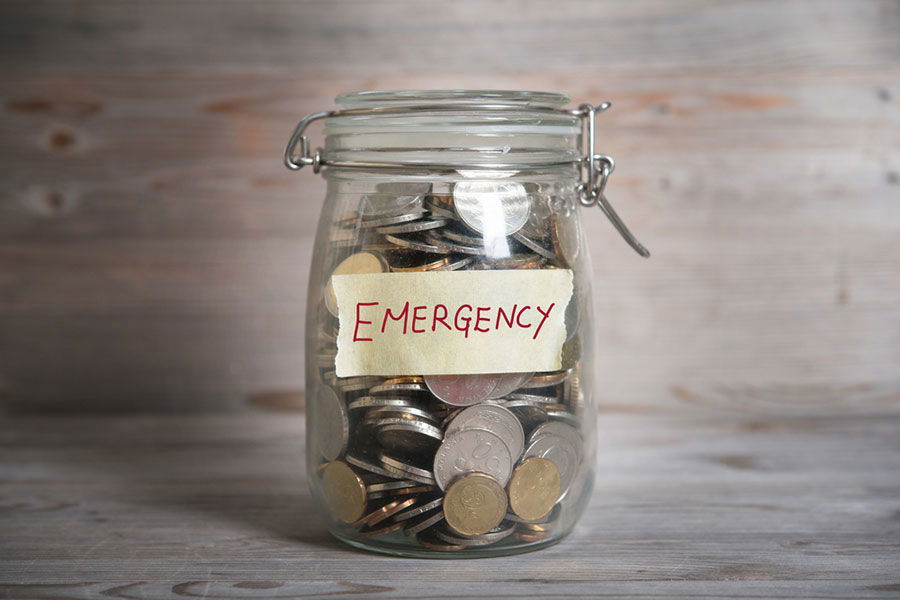When you’re short on cash, turning to a credit card might seem like the easiest solution. But with interest rates often exceeding 25%, it can quickly become an expensive trap—especially if you’re only making minimum payments.
A personal loan with fixed monthly payments can be a better option, even if your credit score isn’t perfect. Unlike credit cards, installment loans give you a set payoff date, predictable payments, and, in many cases, a lower interest rate. Whether you’re covering an emergency expense or consolidating debt, the right loan can help you take control of your finances.
3 Best Loans for Bad Credit With Fixed Monthly Payments
Here’s a look at three lenders that offer personal loans designed for borrowers with bad credit.
CashUSA
- Loan Amount: $500 – $10,000
- APR: 5.99% to 35.99%
- Term: 3 to 72 months
With CashUSA, you use a network to get funds directly into your bank account. It doesn’t matter what type of credit you have, it’s possible for you to find a loan.
In most cases, you receive a decision in minutes, and you can use the loan for any purpose. Plus, you’ll find that you can get funds deposited directly into your bank account by the next business day.
MoneyMutual
- Loan Amount: Up to $2,500
- APR: Varies, depending on state, lender, and credit score
- Term: Varies, depending on type of loan and state
MoneyMutual is an online marketplace of lenders that can connect you with various options. Almost any type of credit is acceptable. However, these are short-term personal loans, and the interest rates and loan terms and conditions vary.
Some online installment loans offered through MoneyMutual are similar to payday loans. In states where it’s allowed, a payday loan could lead to very higher interest rates of more than 200%. Carefully consider the loan offer before you accept it.
However, if you need money within 24 hours, and you just need a relatively small amount, MoneyMutual can help you find a match.
Bad Credit Loans
- Loan Amount: $500 to $10,000
- APR: 5.99% to 35.99%
- Term: 3 to 60 months
With Bad Credit Loans, you can get connected with a lender quickly and easily. You can even get your money as soon as the following business day. This is one of the oldest places to find bad credit installment loans online, as it has been operating since 1998.
No matter your situation, you’re likely to be able to find a personal loan with this website. You can use the funds for any purpose, and make installment payments that you can afford for up to five years.
How Installment Loans Work
An installment loan provides a lump sum upfront, which is repaid in fixed monthly payments over a set period. Unlike credit cards, which have variable payments and no set payoff date, installment loans give you a structured repayment schedule.
Key Features of Installment Loans
- Fixed payments: You’ll know exactly how much you owe each month.
- Set loan term: Repayment periods range from a few months to several years.
- Lower interest rates than credit cards: While rates depend on your credit score, installment loans often cost less than revolving debt.
- Predictable payoff date: You’ll know exactly when the loan will be paid off.
For borrowers with bad credit, installment loans can be a good option since they offer structured repayment and a clear end date. However, lenders may charge higher interest rates or require additional eligibility criteria.

How to Choose the Right Installment Loan for Bad Credit
Not all installment loans are the same—especially for borrowers with bad credit. Before applying, here’s what to consider to ensure you’re getting the best deal possible.
Interest Rates and Fees: The True Cost of Borrowing
A low monthly payment might seem appealing, but it could mean paying much more in interest over time. Consider:
- APR (Annual Percentage Rate): This includes both the interest rate and any fees, giving you a full picture of the loan cost.
- Origination fees: Some lenders charge a percentage of the loan amount upfront.
- Prepayment penalties: If you plan to pay off the loan early, check for extra fees.
Compare multiple lenders and use an online loan calculator to see how much you’ll actually pay over time.
Loan Terms and Monthly Payment Amounts: Balancing Affordability With Total Cost
A longer loan term can lower your monthly payment, but it increases the amount of interest paid. Here’s how to decide what’s best:
- Shorter-term loans: Higher monthly payments but lower total interest.
- Longer-term loans: Lower monthly payments but higher total interest.
Example: A $5,000 loan at 20% APR:
- 3-year term: ~$186/month, $1,707 total interest
- 5-year term: ~$132/month, $2,930 total interest
While a 5-year loan seems more affordable month to month, it costs over $1,200 more in interest. Choose a balance that fits your budget without overpaying.
Approval Requirements: What Factors Lenders Consider
Lenders look at multiple factors to determine your eligibility and interest rate:
- Credit score: Higher scores get better rates, but bad credit lenders accept lower scores.
- Income and employment: Lenders may require proof of steady income.
- Debt-to-income ratio (DTI): If you have too much existing debt, approval may be harder.
- Collateral (for secured loans): Some lenders allow you to secure the loan with a car or savings account for a lower rate.
If your credit score is very low, you might still qualify, but expect higher interest rates. Consider improving your credit before applying if possible.
Where to Get a Loan for Bad Credit Besides Online Lenders
Not everyone qualifies for online lenders, and some borrowers may prefer lower-cost alternatives. If you have bad credit, here are other ways to secure a loan.
Credit Unions
Credit unions are member-owned financial institutions that may offer more flexible loan options than traditional banks. Many provide personal loans with lower interest rates and more lenient credit requirements.
- Why consider it: Credit unions may approve borrowers with lower credit scores and offer more personalized lending decisions.
- Potential downside: You typically need to be a member to apply, though some have easy membership requirements.
Secured Loans
A secured loan requires collateral, such as a car, savings account, or another asset. Since lenders have security in case of missed payments, they may offer lower interest rates than unsecured loans.
- Why consider it: Using collateral can increase approval odds and lower interest rates.
- Potential downside: If you fail to make payments, the lender can seize the asset you used as collateral.
Peer-to-Peer Lending
Peer-to-peer lending platforms connect borrowers with individual investors willing to fund loans. These loans often have more flexible approval criteria than traditional lenders.
- Why consider it: Peer-to-peer lenders may approve borrowers that banks reject, and some offer competitive rates.
- Potential downside: Interest rates can be high for bad credit borrowers, and funding is not always instant.
Final Thoughts
If you have bad credit, finding a loan with affordable monthly payments takes research. While online lenders offer fast approvals, credit unions, secured loans, and peer-to-peer lending may provide better rates or terms.
Before accepting a loan, review the total cost, including interest rates, fees, and repayment terms. Borrow only what you can afford, and explore alternatives like credit-building loans or financial counseling if you need help improving your financial situation.







